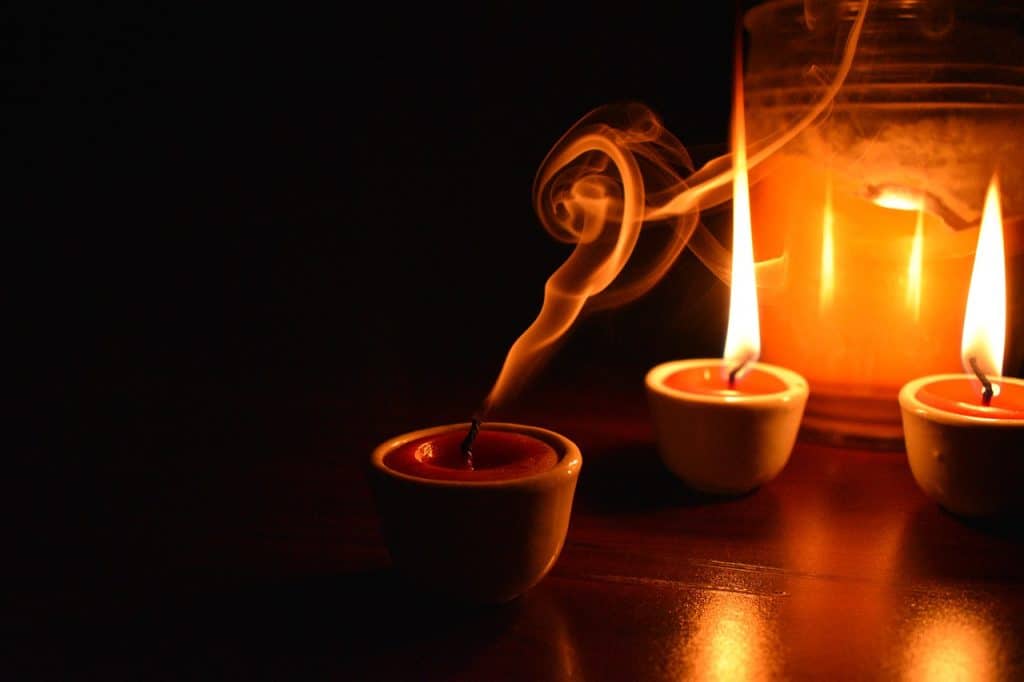Do you like candles? If you do, then you are reading the right article.
Candles are small household materials that have been around for thousands of years. Within that time – since they were first invented – candles have experienced a lot of changes and development, in terms of the type of materials used in their making. These changes also occur in the purpose of candles or the reason why candles are lit (for example; in the past, candles were lit majorly for the sake of indoor illumination, but things are different nowadays).
WHO CAN WE THANK FOR THE INVENTION OF CANDLES?
From the Ancient Egyptians to the Romans and the Ancient Chinese, there are a number of ancient civilizations that have made notable impact to the invention of the candle as a tool. However, nobody quite knows the actual individual that should be thanked for this timeless invention (i.e. candles).
Candles were first made thousands of years ago and, since then; they have become a common fixture in our lives (and our world). Due to this reason, it is understandable for people to wonder about the exact impacts they have on the world at large.
The earliest forms of candles were made of tallow or boiled down fat, the majority of which was obtained from the carcasses of slaughtered cows and other livestock. Tallow candles have a long and rich history that spans the length of millennia. However, the invention of paraffin candles in the 19th century began to tilt the scales.

Tallow candles were known for their distinct scent, which was very similar to the aroma of burning meat. Apart from this, they were also known for not burning cleanly (meaning, they usually produced considerable quantities of soot, and that their flames were products of significantly incomplete combustions). This means that tallow candles were not exactly environmentally friendly; especially when we take not of the fact that any kind of combustion or burning – including the actions of a single candle – will produce compounds that may pose significant harm to the planet.
Since the process of burning things is not completely avoidable at the current time, it then follows that people should look for ways to burn things cleanly; with the production of as little green house gases and harmful components as possible.
WHAT ARE THE TYPES OF CANDLES?
Some candles produce more harmful volatile compounds compared to others (although, it should be noted that all candles release certain – volatile – emissions when they burn). The level of harm to the environment depends on factors such as fragrance, the kind of wax used and so on.
On the basis of smell, candles can either be scented or non-scented. And when it comes to scented candles, one can never be quite sure of the ingredients used in making a candle, since a lot of candle manufacturers do not go into details on the type of fragrance they use (they usually keep this as a trade secret). However, those that contain phthalates and other harmful compounds (e.g. green house gases) may cause harm to humans, animals and the environment as a whole; thereby contributing to climate change.
The kind of wax used in making a candle is another factor that determines the effect of a candle on the environment, along with the candle type. Based on this parameter (i.e. waxes), the different types of candles include the following:

- Beeswax candles
Candles made from beeswax are by far the safest, as far as climate change is concerned. This is because beeswax is a completely natural material which is produced by bees. However, when you consider the environmental impact of using beeswax candles, things get a little complicated.
This is because in some cases, bees may be maltreated and starved in order to obtain their beeswax; and this can lead to the death of the bees, which in turn causes a reduction in pollination, which may have disastrous effects in the long term.
Thus, while beeswax is our top peak as far as environmental safety is concerned; special care should be taken to preserve the bees, even as beeswax is extracted. The solution is to go for beeswax candles which were made from cruelty-free and humane processes.
- Soy wax candles
Soy wax is the next best thing after beeswax. This kind of candle wax is widely known to be a safe choice in terms of environmental impact and climate change due to the release of volatile substances, during candle burning.
They are made from soy.
- Coconut wax candles
Candles made from coconut are a relatively new invention. And as a result of the natural nature of their raw material (i.e. coconuts), they are known to burn quite cleanly.
- Paraffin wax candles
Candles made from paraffin wax are by far some of the most dangerous and harmful in the world. Paraffin wax is a by-product of petroleum, which makes it extremely non-natural. Candles made from this wax tend to release compounds such as benzene, toluene, phthalates and acetone among others. All these compounds may lead to climate change, because they are harmful to the Earth’s environment.
Unfortunately, paraffin wax is the most common type of candle wax in the world. Candle makers around the world prefer it because it is cheap and easy to produce en masse. This means that paraffin candles contribute a large majority of the environmental impacts associated with candles.
DO CANDLES CAUSE CLIMATE CHANGE?
The world is turning towards safer options, and everyone wants options that are “green.” This logic also applies in the world of candles. Despite this, a lot of people wonder, “Do candles cause climate change?”
The simple answer to this question is yes, after all anything that burns has the potential to contribute detrimental compounds to the air. And candles burn. More importantly, some candles release dangerous volatile components when they burn; thereby causing harm to the environment. Beeswax, however, does the least damage (as it is the safest type of candle wax known).




